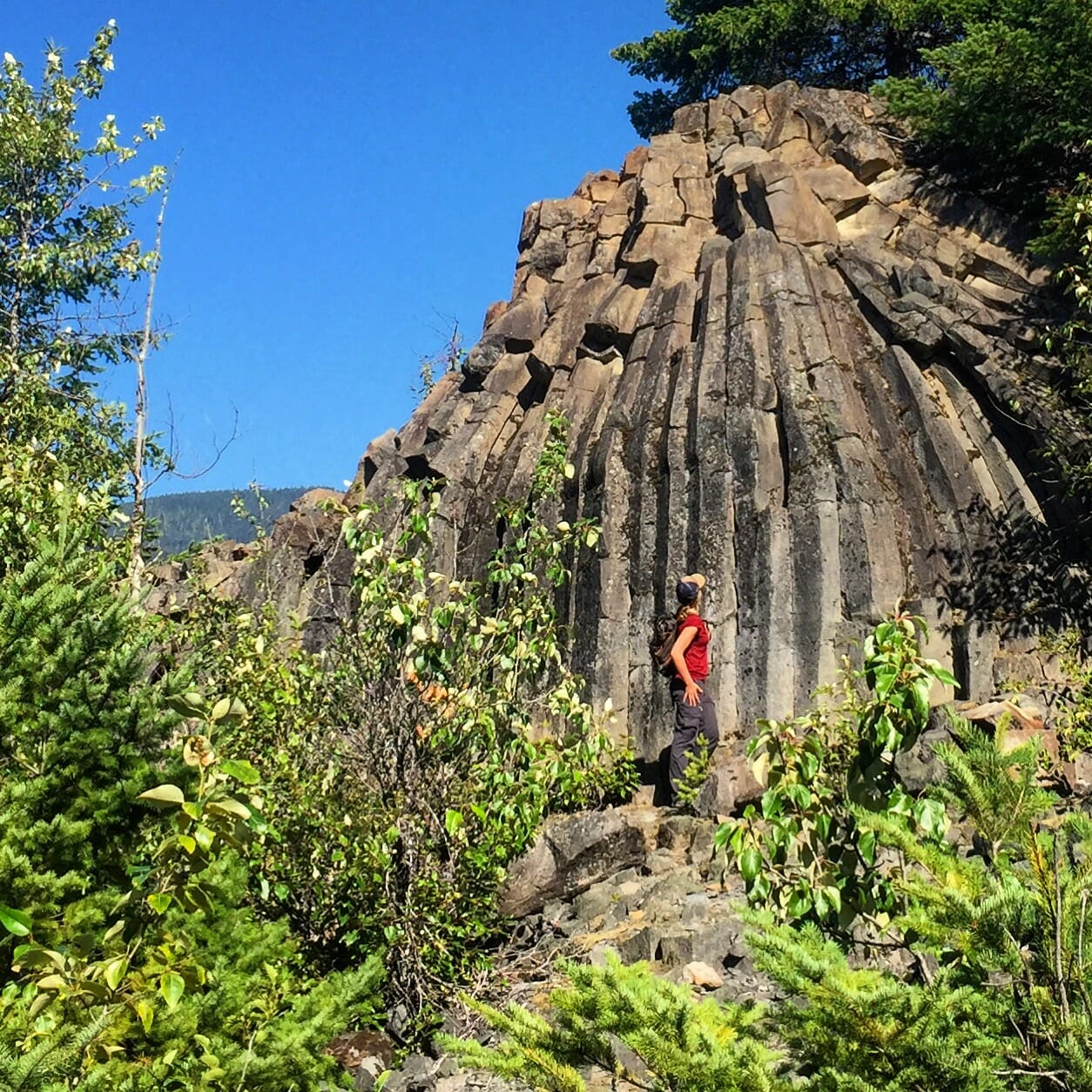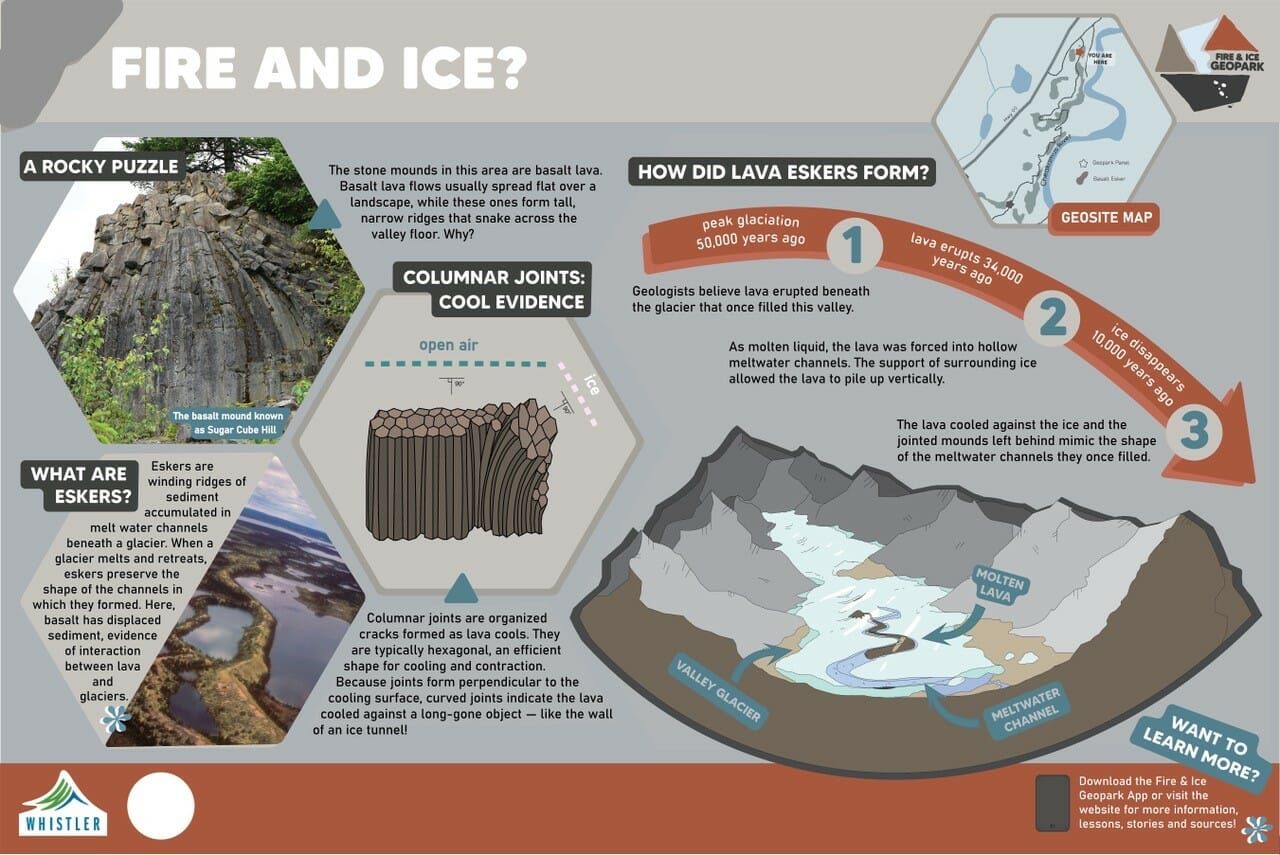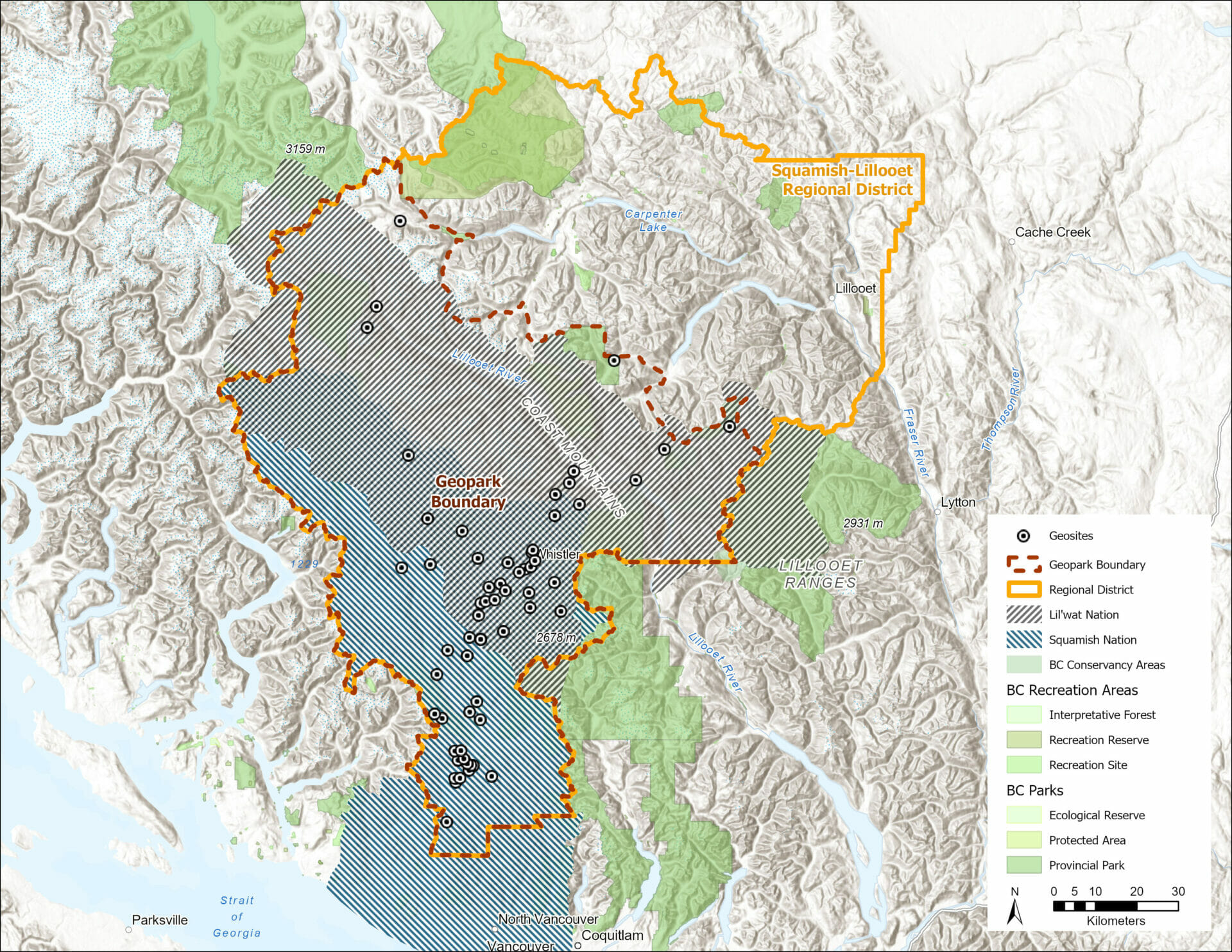


The Sea to Sky Fire & Ice Aspiring Geopark will not be a ‘park’ in the way most people think of parks. That descriptor was determined by UNESCO.
The Fire & Ice Aspiring Geopark will provide a thematic umbrella for multiple geosites within the region. The Fire & Ice Aspiring Geopark will be governed and coordinated by a not-for-profit society. The society will work with interest groups to provide curatorial consistency for each geosite.
The Geopark will not commandeer public lands, or inhibit any form of development, or affect private property, or impose rules or regulations; nor do they impede First Nations’ Rights and Titles.

Why ‘Fire & Ice’ and why ‘Aspiring’ Geopark?
- ‘Fire & Ice’ represents the interplay of volcanism and glaciation that shaped the landscape.
- ‘Aspiring’ because we aspire to achieve UNESCO designation (after which ‘Aspiring’ will be removed). In 2020 the Fire & Ice Geopark was granted ‘Aspiring’ status by the Canadian Geopark Network which, in Canada, is the conduit to UNESCO designation.
Goals of the Geopark
- Increase awareness of the region’s geological heritage by helping people understand that biodiversity and human heritage – led by Indigenous heritage – are shaped by geology.
- Strengthen residents’ understanding of where they live, thus providing communities with a sense of pride and a deeper commitment to stewardship.
Geographic Overview

Latest Status
In September 2020, following the endorsement by Whistler Council, the RMOW submitted a grant application to the joint federal-provincial Investing in Canada Infrastructure Program (ICIP) to support the project.
In 2022, the RMOW was awarded the grant from ICIP.
Overview
The RMOW is exploring the development of a geosite within Whistler at the Cheakamus Crossing dacite lava escarpment, to serve as an example for other geosites within the Sea to Sky region.
A new proposed trail would link the Sea to Sky Trail near Train Wreck to the lava escarpment geosite adjacent to Cheakamus Crossing and on to Loggers Lake, forming a loop with other existing trails. There is a proposed viewing platform, covered shelter, stone furniture, naturalized grassy areas and interpretation of geology, ecology and cultural history.
The site was identified in the Geopark Feasibility Study conducted by the RMOW in 2017.
Timeline
Initial Phase – Whistler Geosites
- Fall 2020: Grant application submitted to Investing in Canada Infrastructure Program to develop a Whistler geosite.
- 2022: Receive grant application results and determine next steps.
- 2023-2024: First Nations, interest groups and community engagement.
- 2024-2026: Depending on outcome of First Nation, interest group and community engagements, potential infrastructure including trails for the Whistler geosite to be completed.
Community Engagement
Details on community engagement will be provided following First Nations consultation.
Funding
This initial phase of the Geopark is funded through the Resort Municipality Initiative (RMI), in addition to any grant money received from other levels of government.
RMI is incremental funding provided by the Provincial Government to support Whistler’s tourism economy.


